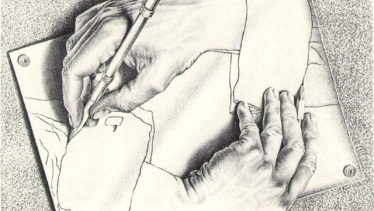NEUROGENETICS
Silvia Paracchini Research GroupThe Genetics of Handedness
The vast majority of people are right–han ded (~90% world-wide) and a population bias in handedness is a unique feature to humans.
ded (~90% world-wide) and a population bias in handedness is a unique feature to humans.
Handedness shows some correlation with cerebral asymmetries where being right-handed implies left-hemisphere dominance for language. It has been proposed that handedness emerged as a consequence of language evolution and a link between hand preference and psychiatric disorders have been extensively investigated. This is supported by some evidence from imaging studies showing atypical cerebral asymmetries in patients including individuals with dyslexia and specific language impairment (SLI).
Understanding the genetic basis of handedness may open new insight in understanding the relationships between handedness, cerebral asymmetry, and neurodevelopmental disorders. Our recent GWAS for handedness has led to the identification of a strong candidate gene. We have shown that the PCSK6 gene, known to set up left-right body asymmetries in early development, is associated with handedness specifically in people with dyslexia.
We are now investigating the molecular basis of this complex association. In addition we are conducting further genetics screening in collaboration with William Brandler based in Prof Monaco’s group in Oxford. See our recent paper in PLoS Genetics.